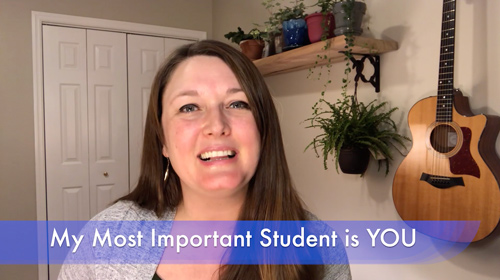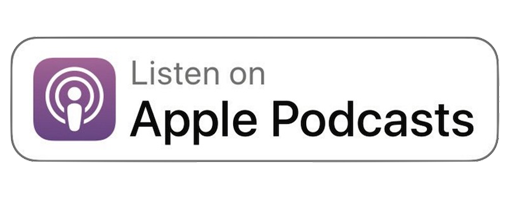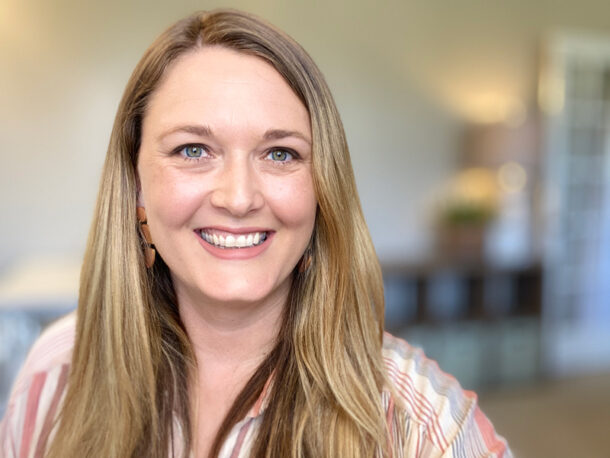English Lesson:
Manner of Articulation and Place of Articulation
If English is not your first language…
If English is not your first language, making English sounds does not come naturally. You might speak a language that has many similar sounds, but there’s a good chance your native language does not include all of the sounds of English.
That’s why you need to understand how and where the sounds of English occur.
The how of making sounds is called the manner of articulation.
The where of making sounds is called the place of articulation.
In this post, we will look at every consonant sound in English. We will talk about how they are created and where they are created. In addition to this article, I’ve included two preview videos from my Clear English Pronunciation course.
Free Video Lesson
My video course Clear English Pronunciation course is changing lives. It will change your life too! Get started with this free lesson.
What is Manner of Articulation?
Manner of Articulation is the “how” of making sounds. When learning our first language, we don’t usually think about how we make the sounds we do. We just reproduce what we’ve heard over the first few years of our lives. We make the sounds without thinking how our mouth tongue, and teeth are doing, unless we need the additional support of speech therapy.
Manner of articulation in second language learning is important, because pronunciation doesn’t come as naturally as when learning our first language. It’s important to know how sounds are made so that you can pronounce sounds correctly and speak more clearly.
In this section, we will talk about “manner of articulation”, or how we make sounds.
There are six different ways, or manners of articulation, that we will discuss in this lesson. Here is a video to kick off the lesson. In this video I cover the first two manners, but you can watch the entire lesson, plus over 20 other videos in my Clear English Pronunciation Course.
1) Stop or Plosive
We build pressure of air and then release it. This is a sudden burst of air. Examples of stops include: /p/ /b/ /t/ /d/ /k/ /g/
Take a look at stops in these words.
Initial Sounds
/p/ – pig
/b/ – bag
/t/ – tall
/d/ – dad
/k/ kick
/g/ – girl
2) Fricative
We stop part of the air so it can’t come through everywhere. It is a stream of air. Imagine a river of water flowing. Then imagine putting a large rock in the center of the river. The flow of the water would change because of the large rock, but the water would still flow around it. This is a strong description of what a fricative sound is formed. There is a flowing river of air, and you partially block it with your tongue, teeth, or lips.
Sounds include: /f/ /v/ /s/ /z/ /h/ /ʃ/ /ʒ/ /ð/ /θ/
Take a look at fricatives in these words.
Initial Sounds
/f/ – four
/v/ – van
/s/ – sun
/z/ – zip
/h/ – hello
/ʃ/ – ship
/ʒ/ – This sound does not occur at the beginning of words in English. It usually occurs in the middle of English words.
/ð/ – these
/θ/ – thin
Final Sounds
/f/ – half
/v/ – have
/s/ – pass
/z/ – has
/h/ – This sound does not occur at the end of words in English. It occurs in the beginning or middle of English words.
/ʃ/ – wash
/ʒ/ – rouge – This sound at the final position is rare. It usually occurs in the middle of English words.
/ð/ – bathe
/θ/ – bath
3) Affricate
We combine stops and fricatives to form affricates. Examples include: /tʃ/ and /dʒ/. Affricates start with a stop and then transitions into a fricative.
Initial Sounds
/tʃ/ – chip
/dʒ/ – just
Final Sounds
/tʃ/ – catch
/dʒ/ – badge
4) Nasal
We close our palate and let air stream through the nose. Examples include: /m/ /n/ /ŋ/
Initial Sounds
/m/ – moon
/n/ – nap
/ŋ/ – This sound does not occur at the beginning of words in English.
5) Liquid
We let air stream on the sides of our tongue. Examples include: /ɹ/ /l/
Initial Sounds
/ɹ/ – red
/l/ – light
Final Sounds
/ɹ/ – dear
/l/ – fill
6) Glide
We move our mouth constantly from a articulation to a vowel sound. Examples include: /w/ and /j/
Initial Sounds
/w/ – win
/y/ – yellow
Final Sounds
/w/ – This sound does not usually occur at the end of a word in English. When you see a w at the end of a word, it usually means you bring your lips together in a small circle near the end of the vowel sound that comes before it, but the /w/ sound is not produced.
/y/ – This sound does not usually occur at the end of a word in English.
Free Video Lesson
My video course Clear English Pronunciation course is changing lives. It will change your life too! Get started with this free lesson.
What is Place of Articulation?
Place of Articulation is the where of pronunciation. It is the location of where sounds are produced.
In this section, you will learn where to place your tongue, teeth, and lips when creating sounds, how different sounds involve different parts in the mouth, and how to pronounce all of the consonant sounds in English.
First, we will look where the different parts of the mouth are located, and then look at where each of the English consonants are pronounced.
The place of articulation is important in pronunciation, because you must know where to produce sounds in order to pronounce them correctly. If you are not pronouncing a consonant correctly, it’s probably because the place of articulation is not correct as you are pronouncing the sound.
Before we dig into all of the details, take a look at the video I created about the place of articulation in my course, Clear English Pronunciation. You can watch the full video plus over 20 additional video lessons at StudyWithAndrea.com/SPEAK.
Here are the Places of Articulation You Will Learn
labials – lips
dentals – teeth
tongue
palate – roof of the mouth; the hard palate is the harder (firmer) part of the roof of the mouth, in the front half of the mouth; the soft palate is farther back, near the rear of the mouth. If you read
alveolar ridge – the gums behind your top teeth
If you are not pronouncing a consonant correctly, it’s usually because you are not articulating the consonant in the correct location. Sometimes it’s important to go back to basics and make sure that your tongue, teeth, and lips are in the right shape and location in order to produce the sound you want to make.
Here is a list of the sounds you will learn today:
Bilabials
Formed with two (bi-) lips (labials)
/p/ – pop
/b/ – Bob
/m/ – mom
Labiodentals
Formed with the bottom lip (labio-) and top teeth (dentals)
/f/ – fish
/v/ – very
Interdentals
Formed by putting the tongue between (inter-) the teeth (dentals)
/θ/ – thick
/ð/ – though
Alveolars
Formed by putting the tongue on the alveolar ridge, which is the gum line above the top teeth
/t/ – Tom
/d/ – dad
/n/ – none
/s/ – sit
/z/ – zoo
/l/ – lamp
/ɹ/ – run
Palatals
Formed by touching the sides of the tongue to the roof of the mouth
/ʃ/ – ship
/ʒ/ – pleasure
/tʃ/ – cheap
/dʒ/ – jump
/j/ – yogurt
Velars
Formed by putting the back part of the tongue against the soft palate
/k/ – curl
/g/ – girl
/ŋ/ – song
Tongue Twisters for Consonant Pronunciation Practice
Are you ready to practice your consonant sounds? Here are some twisted tongue twisters that focus on different consonant sounds. For each one, I will list what sound it is practicing. That way, you can focus on the sounds you have the most difficulty with.
/p/ /k/
Peter Piper picked a peck of pickled peppers.
Did Peter Piper pick a peck of pickled peppers?
If Peter Piper picked a peck of pickled peppers,
Where’s the peck of pickled peppers Peter Piper picked?
/s/ /ʃ/ /l/ /ɹ/
She sells sea-shells on the sea-shore.
The shells she sells are sea-shells, I’m sure.
For if she sells sea-shells on the sea-shore
Then I’m sure she sells sea-shore shells.
/s/ /w/ /m/ /n/
Swan swam over the pond,
Swim swan swim!
Swan swam back again –
Well swum swan!
/b/ /d/ /t/ /ɹ/
Betty Botter bought a bit of butter.
The butter Betty Botter bought was a bit bitter
And made her batter bitter.
But a bit of better butter makes better batter.
So Betty Botter bought a bit of better butter
Making Betty Botter’s bitter batter better
/f/ /ʃ/
There was a fisherman named Fisher
who fished for some fish in a fissure.
Till a fish with a grin,
pulled the fisherman in.
Now they’re fishing the fissure for Fisher.
/g/ /k/
How many cookies could a good cook cook
If a good cook could cook cookies?
A good cook could cook as much cookies
As a good cook who could cook cookies.
/θ/ /t/ /z/ /f/ /l/ /ɹ/
Through three cheese trees three free fleas flew.
While these fleas flew, freezy breeze blew.
Freezy breeze made these three trees freeze.
Freezy trees made these trees’ cheese freeze.
That’s what made these three free fleas sneeze.
/dʒ/ /b/ /l/ /ɹ/ /j/ /p/ /k/
Yellow butter, purple jelly, red jam, black bread.
Spread it thick, say it quick!
Yellow butter, purple jelly, red jam, black bread.
Spread it thicker, say it quicker!
Yellow butter, purple jelly, red jam, black bread.
Don’t eat with your mouth full!
/tʃ/ /ʃ/
Chip shipped a chip to Chip’s friend Rich
Rich shipped Chip’s chip to Rich’s friend Chit
Chit, Rich, and Chip shipped the chip
/ŋ/
Sing a song along with Trong
Trong sings a long song
Sing a song along with Trong
Trong sings a long song
Closing
I hope you enjoyed this this lesson about Manner and Place of Articulation. To learn more ways to improve your English pronunciation, take my 25-video Clear English Pronunciation course.
Happy Learning!
Free Video Lesson
My video course Clear English Pronunciation course is changing lives. It will change your life too! Get started with this free lesson.
21 Comments
Submit a Comment
The following is a TOEFL Reading practice test to help you prepare for the Reading section of the TOEFL test.
Instructions: Read the sample passage below and then answer the questions that follow.
TOEFL Reading Practice Passage
Gorillas are ground-dwelling, predominantly herbivorous apes that inhabit the forest of central Sub-Saharan Africa. The genus Gorilla is divided into two species: the eastern gorillas and the western gorillas (both critically endangered), and either four or five subspecies. They are the largest living primates. The DNA of gorillas is highly similar to that of humans, from 95 to 99% depending on what is included, and they are the next closest living relatives to humans after the chimpanzees and bonobos.
Gorillas' natural habitats cover tropical or subtropical forest in Sub-Saharan Africa. Although their range covers a small percentage of Sub-Saharan Africa, gorillas cover a wide range of elevations. The mountain gorilla inhabits the Albertine Rift montane cloud forests of the Virunga Volcanoes, ranging in altitude from 2,200 to 4,300 metres (7,200 to 14,100 ft). Lowland gorillas live in dense forests and lowland swamps and marshes as low as sea level, with western lowland gorillas living in Central West African countries and eastern lowland gorillas living in the Democratic Republic of the Congo near its border with Rwanda.
(#1) Gorillas move around by knuckle-walking, although they sometimes walk upright for short distances, typically while carrying food or in defensive situations. (#2) A 2018 study investigating the hand posture of 77 mountain gorillas at Bwindi Impenetrable National Park (8% of the population) found that knuckle walking was done only 60% of the time, and they also supported their weight on their fists, the backs of their hands/feet, and on their palms/soles (with the digits flexed). (#3) Studies of gorilla handedness have yielded varying results, with some arguing for no preference for either hand, and others right-hand dominance for the general population. (#4)
The eastern gorilla is more darkly colored than the western gorilla, with the mountain gorilla being the darkest of all. The mountain gorilla also has the thickest hair. The western lowland gorilla can be brown or grayish with a reddish forehead. In addition, gorillas that live in lowland forest are more slender and agile than the more bulky mountain gorillas. The eastern gorilla also has a longer face and broader chest than the western gorilla. Like humans, gorillas have individual fingerprints. Their eye color is dark brown, framed by a black ring around the iris. Gorilla facial structure is described as mandibular prognathism, that is, the mandible protrudes farther out than the maxilla. Adult males also have a prominent sagittal crest.
A gorilla's lifespan is normally between 35 and 40 years, although zoo gorillas may live for 50 years or more. Colo, a female western gorilla at the Columbus Zoo and Aquarium, was the oldest known gorilla at 60 years of age when she died on 17 January 2017.
Questions
1. According to the passage, gorillas can live in
a. a variety of altitudes.
b. several different countries in Africa.
c. thick forests.
d. lowland forests only.
2. All of the following is true about gorillas EXCEPT
a. they primarily eat smaller animals.
b. they live in a forest habitat.
c. their genetics are similar to humans.
d. their diet consists of vegetation.
3. Look at the word predominantly in paragraph 1. The word predominantly in this passage refers to
a. impulsively
b. unfortunately
c. mainly
d. lastly
4. Look at the word inhabits in paragraph 2. The word inhabits in this passage refers to
a. lives in
b. protects
c. goes
d. works
5. The author implies that
a. most gorillas prefer using their left hand over their right.
b. gorillas rarely walk on their knuckles.
c. gorillas regularly walk upright for long distances.
d. studies haven't solidly proven which hand gorillas prefer using.
6. Why does the writer mention that the eastern gorilla also has a longer face and broader chest than the western gorilla?
a. To validate the importance a broad chest in western gorillas
b. To define the meaning of "broad"
c. To highlight a physical difference between types of gorillas
d. To demonstrate that most gorillas are identical in physical build
7. Which of the following statements is true for BOTH eastern and western gorillas.
a. Both eastern and western gorrilas are brown with red foreheads.
b. Both eastern and western gorrilas have unique fingerprints.
c. Both eastern and western gorrilas have thin hair.
d. Both eastern and western gorrilas have light brown eyes.
8. In Paragraph 3, look at the four numbers (#1, #2, #3, #4) that indicate where the following sentence would be added to the passage.
Such a range of hand postures was previously thought to have been used by only orangutans.
Where would the sentence best fit?
(View all the correct answers below.)
Great job! If you're ready to take your TOEFL preparation to the next level, go to StudyWithAndrea.com/TOEFL.
Answers: 1. d 2. a 3. c 4. a 5. d 6. c 7. b 8. #3
Click on one of the following links to start speaking clearer English!
1) TOEFL MASTER CLASS
2) free mini-course "punctuation mistakes to avoid"
3) Clear English Pronunciation Video Course
4) English Vocabulary - Audio Files & PDF - TOEFL & IELTS
About Andrea
Andrea Giordano is the founder of StudyWithAndrea.com and has taught more than 1,000,000 students from 180 countries. Andrea holds a Master of Education (TESOL) from Shenandoah University, and is the former Executive Director of TESOL and ESL programs at Campbellsville University. Andrea is a proven leader in online English teaching and is driven by her passion to help you speak English clearly.







Its enjoyable and easy to acquire.
Shariful , Bangladesh
So glad you enjoyed the lesson!
I’m Vincent in IUIU. I love the content, it’s satisfactory.
educational thank you